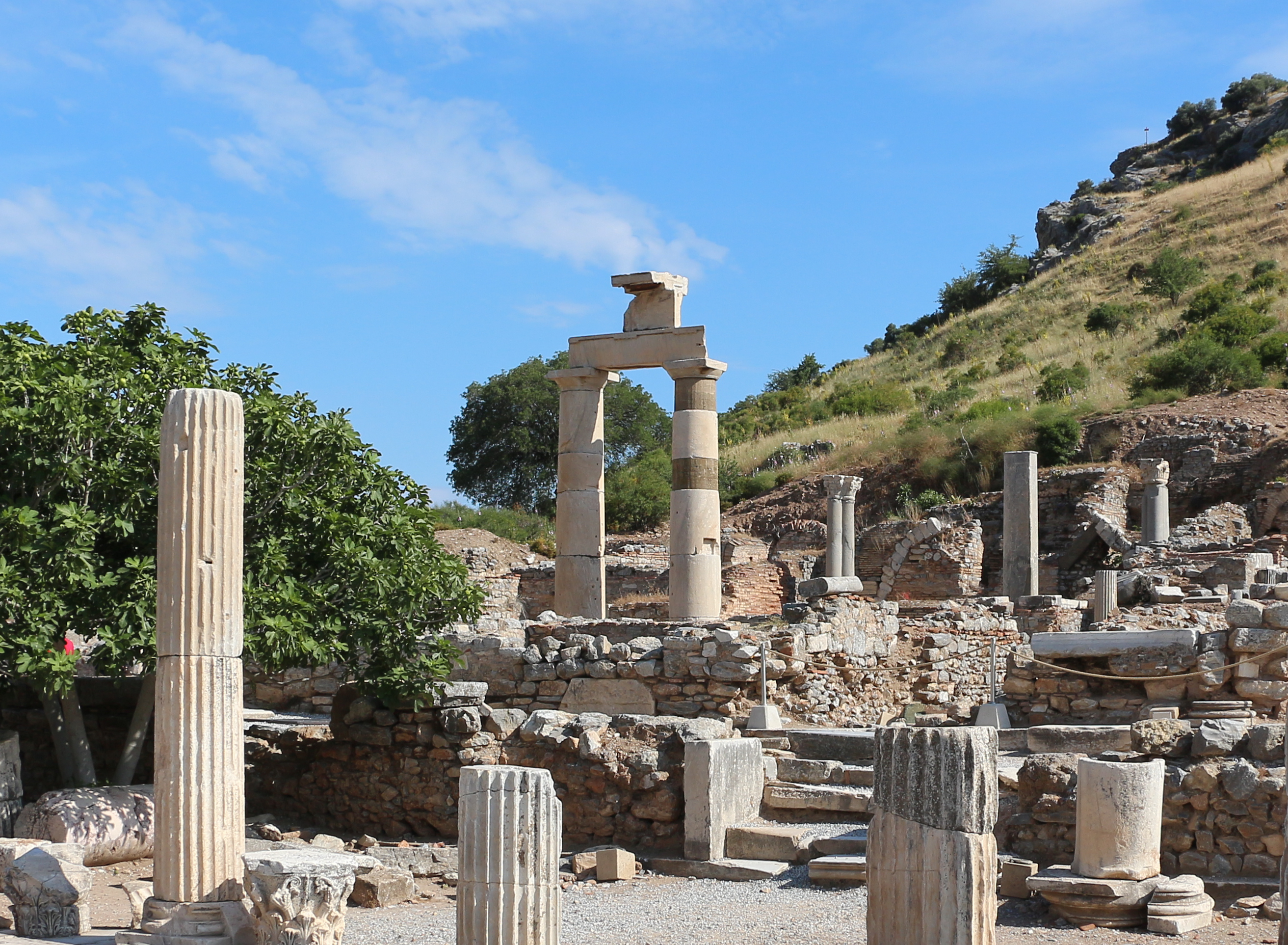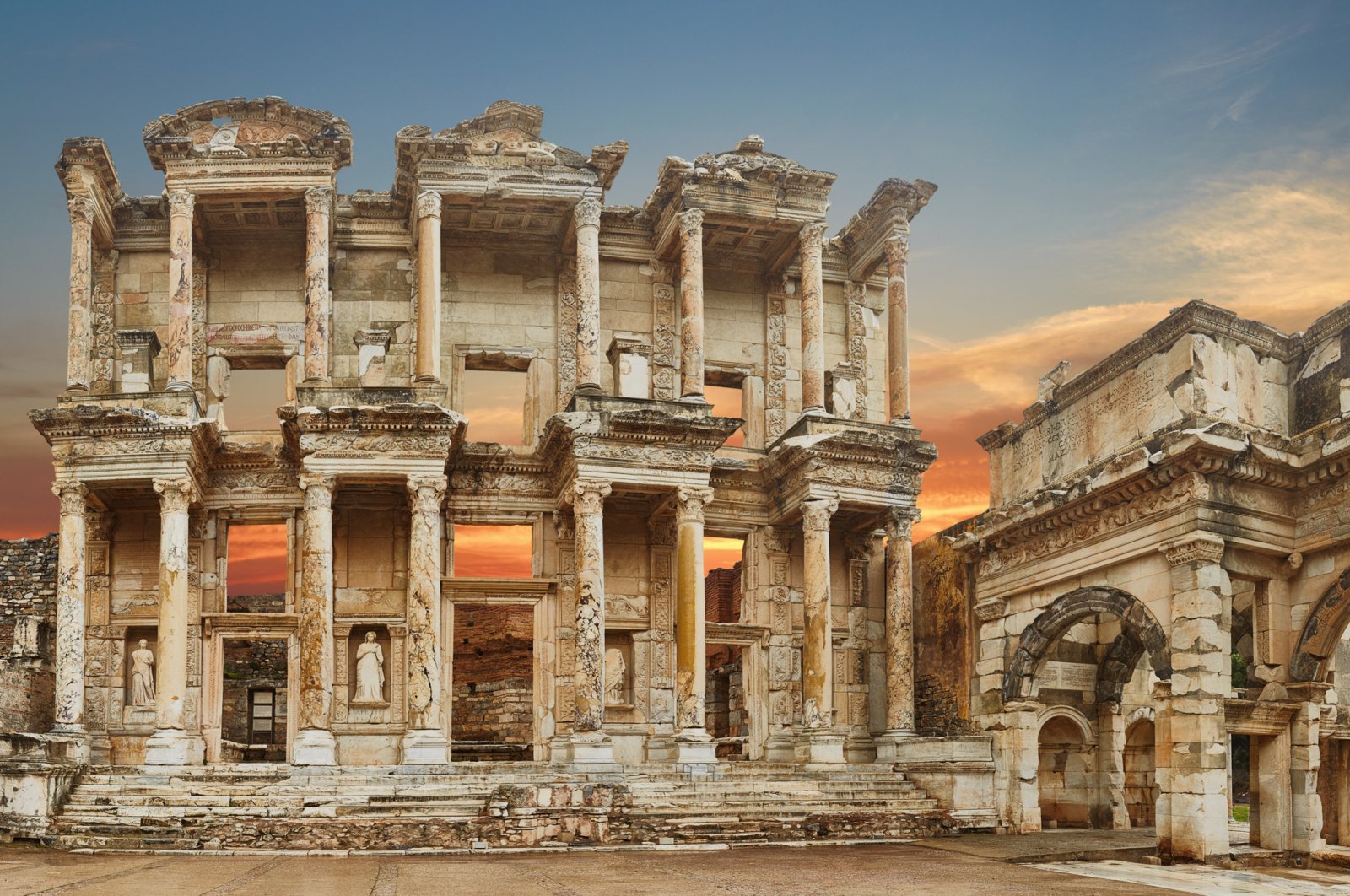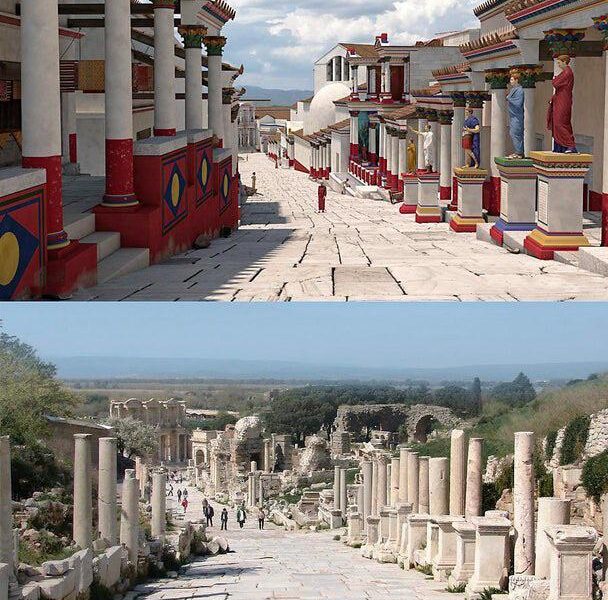The pictured street was a major thoroughfare and remains a modern tourist attraction.
The virtual recreation was done by Hungarian artist Adam Nemeth, who uses his skills to visually replicate what centuries-old structures may have looked like at their zenith.
Nemeth’s illustration of Curetes Street, which is dated 2017, can be found on his website.

Curetes Street was a major thoroughfare in Ephesus, which was, as the Encyclopedia Britannica notes, “the most important Greek city in Ionian Asia Minor,” and was founded around 600 B.C.

The city ruins lie near the modern Turkish town of Selƈuk.
Named after the priests who guarded the flame of Prytaneion, Curetes Street played host to religious festivals depicting the birth of Artemis, that culminated in a procession to the Temple of Artemis.

According to Eusebius of Caesarea, Saint Timothy was the first bishop of Ephesus.
Polycrates of Ephesus (Greek: Πολυκράτης) was a bishop at the Church of Ephesus in the 2nd century.
The smooth marble streets also hide a surprising utility of the Hellenistic world - underground drainage, sewage, and water pipes, water and waste flowing into and out of the city through clay pipes.
The Prytaneion was the symbolic center of a city in ancient Greece, which housed a public hearth which contained an eternal flame.
Other landmarks illustrated by Nemeth include the Library of Celsus, also in Ephesus.

READ MORE: Turkey demands Greece to reduce Friday school hours for Muslim schools in Thrace.


